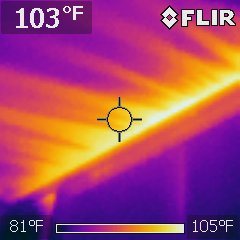Air sealing is an extremely important component of energy efficiency. The process involves identifying openings in the air barrier of the home, and then properly sealing them. When we discuss an air barrier, we are referring to the “building envelope” – a boundary between conditioned space and unconditioned space. The tighter the envelope, the less air is leaking in and out of your home. Generally, the air barriers in a home are the exterior walls, the attic floor, and the ceiling of the basement or crawl space. These are the locations which contain unintended pathways for air infiltration and exfiltration. Some examples are plumbing and electrical penetrations, unsealed recessed/canned lights, open chase ways, open bottom and top plates, and band (or “rim”) joists.


Air Sealing: A Key to Energy Efficiency
Air sealing is the process of identifying and sealing air leaks in a home or business’s building envelope. The building envelope is the barrier between the conditioned (heated or cooled) space inside the home and the unconditioned space outside the home. Air leaks can allow conditioned air to escape, which can increase energy bills and make the home less comfortable.
There are many places where air leaks can occur in a home, including:
- Around windows and doors
- Around electrical outlets and switches
- Around plumbing pipes and vents
- In the attic and crawlspace
- In the foundation
Air sealing can be done by a professional or by the homeowner. If you are a homeowner, there are a few things you can do to air seal your home:
- Look for visible gaps and cracks around windows and doors. Seal these gaps with caulk or weatherstripping.
- Check for gaps around electrical outlets and switches. Seal these gaps with caulk or putty.
- Seal any penetrations in the building envelope, such as plumbing pipes and vents. Use caulk or mastic to seal these penetrations.
- Install insulation in the attic and crawlspace to help prevent air leaks.
Contact us today to learn more about our air sealing services.


